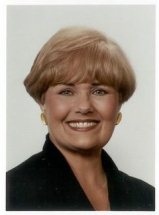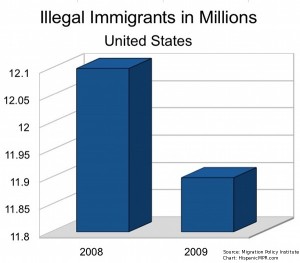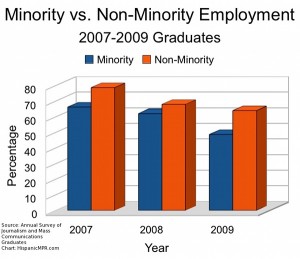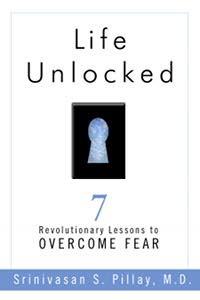Posted by Elena del Valle on September 29, 2010
Part five of a series
By Hilda Luisa Díaz-Perera

Hilda Luisa Díaz-Perera
As the guayabera became more popular, each region in Cuba gave it its own name. In Camagüey province, it was called camagüeyana; along the trocha or military divide during the wars for independence, it was known as trochana; in the town of Manzanillo, it was manzanillera; it was guayabana around the city of Havana, where it is said to have adopted the shirt collar for elegance. Today, although on the world stage it goes under the name of guayabera, there are many places where it is known as habanera and cubanita or little Cuban.
The guayabera came into its own during the XX Century. Cuban peasants were already wearing it and the politicians started using the guayabera during their campaign tours in the countryside. Soon it became the shirt of choice in the popular dance academies in Havana. For more formal occasions, a bow tie was added. Gradually, as more prominent men became followers, the guayabera was able to gain entrance into the most exclusive places and even official government ceremonies.
The earliest graphic testimony available of the guayabera is from 1906, even though the word guayabera is not formally legitimized as a Cuban noun specifically naming the shirt until 1921, when a man by the name of Constantino Suárez included it in his book Vocabulario cubano or Cuban Vocabulary, identifying it as attire popular among the peasants in the countryside.
Click here to read parts one through five of La Guayabera
Posted by Elena del Valle on September 28, 2010

Univision Interactive Media has an exciting opportunity for a Marketing Manager for their Miami, FL office. The ideal candidate should be a strategic, analytical, creative, and energetic professional who is looking to make a significant impact in a growing and dynamic organization. The position is based in Miami and reports directly to the VP of Marketing.
Click here for the full text of Marketing Manager Univision Interactive Media
Posted by Elena del Valle on September 27, 2010

Illegal Immigrants United States 2008-2009 – click to enlarge
As the recession hit the United States it also affected employment including employment of the undocumented. In spite of all the controversy around Arizona’s anti illegal immigrant legislation and federal troops heading to our southern borders there are fewer illegal immigrants in our country now than in recent years.
According to the Migration Policy Institute, a Washington, DC organization, the number of foreigners illegally in the United States is down from an estimated 12.1 million in July 2008, to 11.9 million a year later, and less now. Another telltale indicator that immigrants, like everyone else, have been affected negatively by the economy is the drop in remittances from the United States south. The Institute website sites anecdotal evidence that some Mexican families have sent money to their relatives in the Unites States to help them. Even the demand for visas was down compared to previous years, according to visa statistics sited by the Institute.
Because many immigrants share demographic characteristics with the groups most likely to be affected by the recession such as youths, the uneducated, and new members of labor force often they have been more likely to be victims of the recession; and foreign-born workers are also overrepresented in the construction, manufacturing, leisure and hospitality, and support and personal services industries which have been especially affected by the downturn in the economy, according to the Institute.
The United States is not alone in dealing with immigration issues. A report published recently by the Organization for Economic Co-operation and Development (OECD), which tracks changes in 29 developed countries, indicates that in 2008 the migration of people to developed countries decreased 6 percent to 4.4 million and probably fell more last year. In the five years prior to the recession, movement of migrants into developed countries was high. In spite of the economic hardships few, including the illegal immigrants in the United States, returned to their countries of origin.
Posted by Elena del Valle on September 24, 2010

Social Media Marketing book cover
Photos: Que Publishing
Although a recent IBM survey of 1,000 channel partners (see IBM Offers Channel Partners Guidance in Social Media Marketing by Rick Whiting, CRN.com) indicates that 45 percent of respondents said they are trying their luck with social media 74 percent of respondents said they seek more education and better understanding of the many social media outlets and tools like RSS, wikis, Facebook and Twitter. At the same time they said they sought ways to measure results. That mirrors in some ways what Liana “Li” Evans, a social media executive, says.
Social media is not easy, quick and cheap, says Evans in her recently published book Social Media Marketing: Strategies for Engaging in Facebook, Twitter & Other Social Media (Que Publishing, $24.99). Evans, director, Social media for Serengeti Communications, explains that although adding content to social media is quick and free making the added content worthwhile for the audience requires much work.
Often overnight successes are by accident rather than the result of planned efforts. Those who believe launching a page on a popular site is all that is required in social media marketing will likely find disappointment, according to the author.
Social media is about gaining trust which takes time, she says in the first chapter. She goes on to explain that social media is about having conversations and sharing experiences with others with common interests; and that conversation about a company can take place with or without that company’s participation. Successful marketing on social media, as any other type of marketing, requires that the executives understand the social media forum and develop a company strategy that includes an audience profile, goals and measurement, according to Evans.

Author Liana “Li” Evans
The 342-page softcover book is divided into five parts with several chapters each: The Basics of Social Media, It’s About Conversation, Social Media from the Inside Out, It’s Not About You, and How Social Media Fits into the Online Marketing Picture.
Since 1999 Evans, who has college degrees in public relations and information technology, has been active in social media and search marketing. Before working with Serengeti, she led search engine optimization efforts for an Internet Retailer 500 company. She also led the online efforts of the entertainment website of a Fortune 500 company.

Click here to buy Social Media Marketing
Comments:
Filed Under: Books
Posted by Elena del Valle on September 22, 2010
Part four of a series
By Hilda Luisa Díaz-Perera

Hilda Luisa Díaz-Perera
So, the shirt that would become today’s guayabera was probably first made sometime in the XVIII Century. It then developed gradually over the XIX Century, not as a design made by one person, but rather as the result of the many shirt variations existing in the island and the efforts of several seamstresses and tailors who complied with shifts in taste and fashion by adding or deleting features to the original prototype.
Someone, we cannot identify who, added the collar. Someone else, who surely possessed very high sewing skills, must have thought of adding the narrow pleats with their minuscule stitches down the front and back of the shirt. Then, at some point during the Cuban wars for independence from 1868 to 1898, the design of the Cuban flag was incorporated onto the back of the guayabera.
Click here to read parts one through four of La Guayabera
Posted by Elena del Valle on September 20, 2010
University of Wisconsin-River Falls
Executive Director of University Communications and External Relations
The University of Wisconsin-River Falls invites applications for the position of Executive Director of University Communications and External Relations (EDUC&ER). The EDUC&ER serves as the principal communications and marketing officer of the University with responsibility for overseeing the development and implementation of a university-wide integrated marketing and communications program. The EDUC&ER reports directly to the Chancellor.
Please see the University’s website for the application process, deadlines, required qualifications, and a complete position description at 2.uwrf.edu/hr/employment_opportunities.htm The University of Wisconsin-River Falls, a member of the UW-System, is located on the eastern edge of the Minneapolis/St. Paul metropolitan area in scenic west central Wisconsin. AA/EEO.
Posted by Elena del Valle on September 20, 2010

Click to enlarge
Declining media coverage due to fewer and smaller media outlets has affected marketing and media relations, particularly in the last few years. Further evidence of that is the decline, partly because of the recession, of employment opportunities for journalism and communications university graduates. This may have a medium and long term effect on others who deal with and rely on journalists and communicators to make their living.
In addition to the many challenges resulting from the changes in media formats and workforce reduction in recent years journalism graduates, especially those from ethnic and racial backgrounds, are encountering difficulties finding gainful employment in their area of study. A new report by the University of Georgia resulting from a survey of 2,700 journalism and mass communication students who graduated in 2009 revealed the lowest level of full-time employment in the 24-year history of the study.
Of the 2009 journalism and communication bachelor degree holders who responded to the survey only 55.5 percent were able to find full-time work within a year of graduating. That represents 4.9 percentage points decline from the year before. It is also significantly different from the 2007 figures when 70.2 percent of graduates found employment. Graduates receiving a masters degree also had trouble finding work; the employment rate dropped from 65.4 percent in 2008 to 61.9 percent in 2009.
Ethnic and racial minorities, according to the survey results, suffered more than other graduates. Only 48.6 percent of 2009 minority graduates compared with 63.9 percent of non-minority graduates found full time work. The 15.3 percent difference was three times as large as the gap between minority and non-minority graduates of the previous year (5.9 percent), representing the largest difference in the history of the University’s survey.
Also, survey responses indicate an increase in the number of 2009 graduates working with the internet. More than half (58.2 percent) of 2009 bachelor graduates with communication jobs said their work involved Web writing and editing compared to 50.6 percent who said that the year before.
The Annual Survey of Journalism & Mass Communication Graduates is conducted each year in the James M. Cox Jr. Center for International Mass Communication Training and Research at the University of Georgia. This year’s report was written by Lee B. Becker, Ph.D. Tudor Vlad, Ph.D., Paris Desnoes and Devora Olin.
Posted by Elena del Valle on September 17, 2010

Life Unlocked book cover
Photo: Glenn Kulbako
Srini Pillay, MD, executive coach and chief executive officer of NeuroBusiness (NBG), a company that offers coaching services, believes the primitive part of our brain is constantly sending us messages of alert to warn us about possible danger in our environment. These messages, the rip current of human nature as he describes it, create a sense of anxiety that can prevent us from moving in the direction we truly want.
Being aware of these potential dangers and overcoming the fear they provoke may allow us to function more effectively than heeding the danger signals. In his recently published book Life Unlocked 7 Revolutionary Lessons to Overcome Fear (Rodale Books, $25.99) he talks about how to overcome fears to live better and more fulfilling lives.
The 294-page hardcover book is divided into seven chapters: What you don’t know can hurt you; The science of overcoming dread; Fear of success; If it’s hard to change, it’s not unchangeable; Unlocking a caged heart; Fear and prejudice; and How to develop emotional superglue.
He begins by exploring the idea that everyone suffers from fear of some kind. He then proposes that it is possible to shift the way we view things in order to feel less fearful and anxious. He discusses the fear of success and eight possible causes: loneliness, disorientation, responsibility, the unknown, being unable to maintain success, losing our drive, becoming prey, and losing our identity.

Author Srini Pillay, MD
He goes on to discuss the idea that fear can be the result of conditioning. Once we understand how we are conditioned, he says, we can begin to change our conditioning. He also discusses attachment related fears and his belief that as with other fears, we can change them once we understand them. Prejudice and fear and closely linked, he says.
In Chapter 6, he explains that prejudice may indicate guilt and fear and that finding a productive way to address these feelings may lead to a solution and improve our ability to be successful. In the final chapter he examines the impact that trauma has in our lives and proposes a way to overcome its damage.
In addition to his work as a Certified Master Coach, the author is an assistant clinical professor of psychiatry at Harvard Medical School. This is his first book.

Click here to buy Life Unlocked
Comments:
Filed Under: Books
Posted by Elena del Valle on September 15, 2010
Part three of a series
By Hilda Luisa Díaz-Perera

Hilda Luisa Díaz-Perera
Ciro Bianchi Ross, writing in the Cuban government-sponsored magazine Juventud Rebelde, points out that this early, and from his point of view questionable story about the Sancti Spiritus origins of the guayabera, if nothing else, marks the recognition of the existence of this special shirt and places it within the Cuban historical timetable. He explains that a description of the guayabera is not even present in Cuban literature of the XIX Century, until the 1890’s when author Nicolás Heredia writes about it in his Cuban novel, Leonela. Furthermore, Bianchi Ross says that the Cuban peasant did not wear the guayabera, but rather normally donned a loose blue or striped shirt over his trousers, a straw hat or sombrero de yarey, boots, a neckerchief to wipe off his sweat and his machete.
When the Countess of Merlin, (Havana 1789– Paris 1852), a Cuban aristocrat married to a French count, who is considered the first female Cuban writer, visited Havana in 1840, the guayabera was either not popular yet among the Cuban peasantry around the capital, or it did not go by that name. She does not mention it in any of her well-known writings or in the copious journal she kept of the trip. However, the fact that she does not mention the guayabera, does not mean it did not exist, at least as a prototype.
Click here to read parts, one, two and three of La Guayabera.
Posted by Elena del Valle on September 13, 2010

Jose Azel, Ph.D., author, Mañana in Cuba
Photo: Jose Azel, Ph.D.
A podcast interview with Jose Azel, Ph.D., author, Manana in Cuba (see University of Miami scholar discusses possible Cuba future) is available in the Podcast Section of Hispanic Marketing & Public Relations, HispanicMPR.com. During the podcast, José discusses his recently published book with Elena del Valle, host of the HispanicMPR.com podcast.
José is dedicated to the in-depth analysis of Cuba’s economic, social, and political state, with special interest in post-Castro-Cuba strategies. He is a senior scholar at the Institute for Cuban and Cuban-American Studies (ICCAS) at the University of Miami.
A native of Cuba he left the island in 1961 when he was 13 years old as part of Operation Pedro Pan, a child refugee program. He has been a guest on programs on Mega TV, PBS, America TeVe, GenTV, France 24 TV, and Al Jazeera among others.
José is dedicated to the in-depth analysis of Cuba’s economic, social, and political state, with special interest in post-Castro-Cuba strategies. He is a senior scholar at the Institute for Cuban and Cuban-American Studies (ICCAS) at the University of Miami.
To listen to the interview, scroll down until you see “Podcast” on the right hand side, then select “HMPR Jose Azel, Ph.D.” click on the play button below or download the MP3 file to your iPod or MP3 player to listen on the go, in your car or at home. To download it, click on the arrow of the recording you wish to copy and save it to disk. The podcast will remain listed in the September 2010 section of the podcast archive.

Click here to buy Mañana In Cuba





















